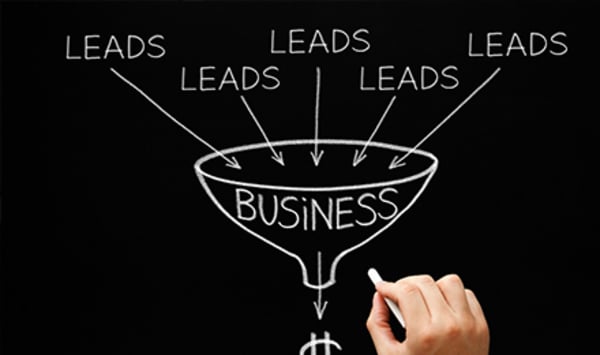
Mastering Lead Nurturing in Real Estate: The Path to Successful Client Engagement
Many real estate agents face a common hurdle: it’s not about generating leads; it’s about ensuring those leads are nurtured until they are ready to make a decision. Understanding how to effectively engage with potential clients is crucial for long-term success.
What is Lead Nurturing in Real Estate?
Lead nurturing in real estate refers to the ongoing process of engaging and maintaining relationships with prospective clients until they are prepared to buy or sell. This phase emphasizes consistent and personalized communication, distinct from lead generation, which focuses on attracting new prospects.
Key objectives of lead nurturing include:
- Building Trust: Position yourself as a reliable and knowledgeable expert.
- Staying Top of Mind: Ensure that you are remembered during a potential client’s property journey.
- Facilitating Decision-Making: Help leads feel confident in their choices.
- Establishing Relationships: Create ongoing communication pathways with potential and past clients.
Challenges Agents Face in Lead Nurturing
Despite its importance, many agents struggle with lead nurturing due to:
- Time Constraints: With numerous tasks to juggle, maintaining consistent follow-ups can slip through the cracks.
- Overreliance on Manual Outreach: Personal conversations can be time-consuming and limit scalability.
- Inconsistent Follow-Up: Without a structured approach, some leads may receive little to no communication.
To overcome these challenges, implementing automated workflows is essential for maintaining consistent engagement without overwhelming your schedule.
Setting the Stage: Lead Generation and Capture
Before nurturing leads, agents must establish a steady influx of prospects. This “lead generation” process serves as the foundation for engagement, utilizing tactics such as:
- Targeted social media advertisements
- Compelling email campaigns
- Direct outreach to introduce yourself
Equally vital is a robust lead capture system that organizes data like contact information and engagement history, making follow-ups more effective. Utilize lead capture tools to enhance your outreach strategies.
Understanding the Lead Nurturing Funnel
The lead nurturing funnel is your strategic guide for converting leads into loyal clients, encompassing four stages:
- Awareness: Introduce leads to your expertise through valuable insights.
- Interest: Generate trust and engagement through tailored content.
- Consideration: Help leads navigate their decision-making journey with supportive information.
- Conversion: Ensure leads choose you as their agent with personalized approach and ongoing encouragement.
Key Components of a Successful Lead Nurturing Strategy
A multi-faceted strategy combines automation with personalized communication. Key components include:
1. Timely, Relevant Follow-Ups
Quick response times are crucial:
- Initial Responses: Follow up within minutes to boost conversion chances.
- Behavior-Based Outreach: Tailor follow-ups based on leads’ activity, such as saved properties.
2. Engaging Email Drip Campaigns
Email campaigns help keep leads informed:
- Effective Sequences: Include buyer journeys, seller guides, and neighborhood insights to maintain interest.
- Maintain Frequency: Balance communications to avoid overwhelming leads.
3. Smart CRM Segmentation
Segment leads for personalized engagement:
- By Stage: Classify leads as cold, warm, or hot for strategic follow-ups.
- By Behavior: Tailor outreach based on preferences and history.
4. Market Updates and Alerts
Share valuable insights to keep leads engaged, even if they’re not actively buying or selling. Regular updates about market trends and property alerts will keep your name top of mind.
5. Knowing When to Call
Some situations call for personal interaction:
- Personal Calls: Leverage frequent online engagement indicators to initiate personal conversations.
- Prepared Conversations: Use CRM notes to guide discussions based on lead history.
Prioritizing Leads Effectively
Not every lead is of equal value. To enhance your conversion rates, it’s vital to prioritize leads based on their readiness to engage:
Lead Scoring Models: These models help assess and identify promising prospects based on engagement level and responsiveness.
Leveraging Data and Analytics
Data-driven strategies enhance lead nurturing:
- Track engagement metrics like website visits and email open rates.
- Analyze performance data to refine outreach tactics and focus on successful strategies.
Measuring Lead Conversion Success
To understand the effectiveness of your nurturing efforts, track conversion metrics:
- Conversion Rate: Monitor how many leads convert to clients.
- Lead Response Time: Assess how quickly you respond to inquiries.
- Engagement Metrics: Evaluate interactions with nurturing campaigns.
Best Practices for Enhanced Lead Nurturing
To elevate your lead nurturing game, consistently implement these best practices:
- Regularly review and reassess your lead pipeline.
- Automate processes where possible while personalizing key interactions.
- Engage leads consistently through check-ins and open house invitations.
- Maintain relationships with past clients for future referrals.
In conclusion, effective lead nurturing is a cornerstone of successful real estate business management. Rather than relying solely on having an extensive list of leads, focus on developing a sustainable follow-up system that fosters meaningful relationships.
For more expert insights, check out the original article on iHomeFinder’s blog.


